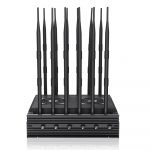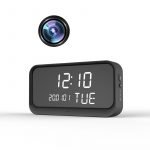The Benefits and Drawbacks of Mobile Phone Jamming

The use of mobile phone jammers is illegal in most areas. They are only legal when used in restricted areas like theaters, schools, and military bases. Although this technology has many benefits, there are some drawbacks as well. In some areas, jammers may not be legal, causing a false sense of security. Using a jammer can also put people in a position to receive prank calls from people who do not switch their phones off.
While cell phones have become ubiquitous, they are not without their downsides. The proliferation of cell phones led to privacy concerns, industrial espionage, and terrorist attacks. It was recently found that cell phones were used to detonate RCIEDs (Remotely Controlled Improvised Explosive Devices), which were used to set off bombs. The use of cell phones has risen exponentially in the past few decades, making the need for cell phone jamming solutions even more important.
A cell phone jammer prevents cell phones from receiving their signals. It works by transmitting a signal on the same frequency as a cell phone near it. This signal is stronger than any other signal in the area, preventing the cell phone to communicate with the cell tower. However, a cell phone may be able to connect to the jammer and send the signal. The device also helps in emergencies by diverting emergency signals.
Despite this, the effects of mobile phone jamming are not entirely clear. Humans are affected by electromagnetic fields that emanate from mobile phones. While low and medium-power jammers do not affect health, research has indicated that exposure to mobile phone jammers can adversely affect sperm quality. Semen samples exposed to mobile phone jamming showed a decrease in motility and DNA fragmentation. If you want to learn more about this technology, read on.
Cell phones send signals to cell phone towers that are separated into different areas. These towers divide the workload based on the area they are serving. A cell phone jammer blocks the signal from all cell phones within its range, so it can effectively shut down service for as much as 1 mile from the device. Jamming devices can be portable and look like actual phones. Others are large, portable, or even mounted on a vehicle to ensure convoy security.
In the past year, the ACMA has uncovered jamming devices as a result of investigating the use of radio direction finding equipment. It also responded to hundreds of complaints about interference in public telephone service. However, not all interference is caused by mobile phone jamming devices. One Sydney company, for example, used an illegal jamming device to prevent eavesdropping during its board meetings. In Australia, the ACMA has confiscated 279 jamming devices since July 2010.
Another example of mobile phone jamming is in classrooms. It can be hidden in a teacher’s desk drawer or cabinet to block the signal of a cell phone. This way, students and teachers can continue their work without being interrupted. And if the jammer does not prevent a call, it may cause an emergency situation. So, if you’re a teacher and want to prevent a child from disrupting the class, consider getting one.








